





Pheochromocytoma
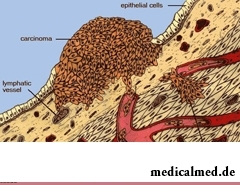 The pheochromocytoma is a hormonal and active tumor of adrenal glands. It is located in marrow or hromaffinovy fabric of gland and it is considered one of the most few studied endocrinological pathologies.
The pheochromocytoma is a hormonal and active tumor of adrenal glands. It is located in marrow or hromaffinovy fabric of gland and it is considered one of the most few studied endocrinological pathologies.
Many aspects of an etiology and development of a pheochromocytoma of adrenal glands are still unknown to modern medicine. The family form of a pheochromocytoma is characteristic of people with hereditary diseases: Reklingauzen's disease (he is a neurofibromatosis), Sippl or Hippelya-Lindau's syndrome.
The pheochromocytoma occurs on average at 1 of 10 thousand people. Among the people suffering from a hypertension, the frequency of a disease makes 1%, i.e. already 1 person on 100 patients with the increased arterial pressure.
Difficulty of diagnosis of a pheochromocytoma of adrenal glands consists in quite often asymptomatic course of a disease or in a wide range of clinical symptoms of a pheochromocytoma. So according to the American physicians the correct diagnosis at patients with a pheochromocytoma is established only in 37-40% of cases.
As a rule, the pheochromocytoma of an adrenal gland is located in one of glands. Defeat by a tumor of both pair bodies or localization of a pheochromocytoma out of area of adrenal glands is diagnosed only at 10-15% of diseases.
And in 10% of cases of pathology malignant symptoms of a pheochromocytoma – innidiation of a tumor in lymph nodes, bones, muscles, a liver are found, is more rare - in lungs and a brain.
Symptoms of a pheochromocytoma of adrenal glands
One of the main symptoms of a pheochromocytoma is hypertensia. The patient can have an incidental supertension or constant. In the first case attacks of hypertensia are provoked by emotional experiences, the raised exercise stress or an overeating.
During an attack of hypertensia carry to pheochromocytoma symptoms:
- headache of the pulsing character,
- nausea,
- vomiting,
- pallor of integuments,
- perspiration,
- discomfort in a breast and a stomach,
- myotonia of shins.
After an attack at the patient total disappearance of all symptoms of a pheochromocytoma, a sharp lowering of arterial pressure up to cardinally opposite state is observed – hypotensions.
Differential diagnosis of a pheochromocytoma has to be carried out at people with complaints on:
- alarm attacks,
- hyperventilation syndrome,
- inflows during a menopause,
- the increased need for caffeine,
- spasms,
- short-term loss of consciousness.
Distinguish signs of psychological, cardiovascular, endocrine exchange, hematologic and gastrointestinal frustration from symptoms of a pheochromocytoma of the complicated form:
- psychoses,
- neurasthenia,
- heart failure,
- defeats of vessels of kidneys and eyeground,
- hyperglycemia (the increased content of glucose in blood),
- hypogonadism (deficit of hormones androgens in an organism),
- increase in erythrocytes or SOE of blood,
- hypersalivation, etc.
Diagnosis of a pheochromocytoma of adrenal glands
Clinical symptom of a pheochromocytoma is existence in tissues of an urinary system, adrenal glands and bronchial tubes of catecholamines. These specific substances produce katekholaminprodutsiruyushchy fabrics of a tumor. Granules of catecholamines in diagnosis of a pheochromocytoma can be found, having applied a silvering method according to Gamperlyu-Masson and across Grimelius.
Also assessment of secretion of catecholamines in a daily portion of urine is the cornerstone of laboratory diagnosis of a pheochromocytoma. Besides, in the patient's urine adrenaline and vanililmindalny acid quite often are found.
The second stage of diagnosis of a pheochromocytoma of adrenal glands – studying of features of fluctuations of arterial pressure of the patient. Increase in the general vascular resistance and decrease in volumes of blood, as a rule, is found in patients with this type of a hormonal and dependent tumor.
Obligatory stage of diagnosis of a pheochromocytoma is control of cordial activity. Development of a cardiomyopathy and permanent disturbance of a cordial rhythm is considered a characteristic symptom of a pheochromocytoma.
After the clinical and laboratory trials topical diagnosis of a pheochromocytoma – a stsintigrafiya with radioactive material metaiodbenzylguanidine is carried out. Effective diagnostic methods of a pheochromocytoma from 90-100% sensitivity to a tumor are also MPT and KT.
Use of ultrasonography in diagnosis of a pheochromocytoma is justified only in the presence of a tumor more than 2 cm. The angiography in diagnosis of a pheochromocytoma is applied seldom in connection with labor input of a method and high risk of complications.
Treatment of a pheochromocytoma of adrenal glands
 The most radical method of treatment of a pheochromocytoma – a surgical oncotomy. However it can be carried out only after stabilization of arterial pressure.
The most radical method of treatment of a pheochromocytoma – a surgical oncotomy. However it can be carried out only after stabilization of arterial pressure.
For this purpose at a presurgical stage of treatment of a pheochromocytoma to the patient reception and - adrenoblockers is appointed: Phenoxybenzamine, Phentolamine, Tropaphenum, etc. Emergence of the orthostatic fluctuations of arterial pressure caused by a body postural change is considered criterion of efficiency of treatment of a pheochromocytoma.
The choice of a method of surgical treatment of a pheochromocytoma depends on features of a tumor. The good manipulation during operation is provided transperitoneal, transthoracic, extra peritoneal or the combined accesses for an operative measure.
At single tumors efficiency of surgical treatment of a pheochromocytoma high. The recurrence of a disease is observed only in 12-15% of cases.
In certain cases after an oncotomy the patient has no decrease pressure. Such postoperative complication is connected with injury of a renal artery or an incomplete oncotomy.
At multiple tumors of the uniform standard in surgical treatment of a pheochromocytoma does not exist. Full removal of all tumors is considered expedient, however because of high risk of operation from this tactics of treatment of a pheochromocytoma it is necessary to refuse and carry out a resection of tumors in several steps or to delete only a part of a tumor.
Conservative treatment of a pheochromocytoma of adrenal glands is less effective. It is directed to decrease in an organism of level of catecholamines by drugs on the basis of A-metiltirozinoma. Conservative treatment of a pheochromocytoma is capable of 80% to reduce quantity of catecholamines and to prevent development of hypertensive crisis. However systematic reception A-metiltirozinoma can lead to disturbances of mentality and functional disorders of a GIT.
During life the average person develops neither more nor less two big pools of saliva.

Work of a brain is extremely complex and in many respects is not studied yet. It is confirmed also by the features of thought processes which are shown in...
Section: Articles about health
One of the major chemical processes happening in a human body are oxidation reactions. They go with participation of fats and carbohydrates which we receive from food, and the oxygen getting to us from air. A main goal of such reactions is it is received...
Section: Articles about health
Cold is such painful that each sigh becomes a victory, heat "knocks" down, and the ache in joints forces to think only of pain. Some people with approach of the first symptoms of cold make the self-sacrificing decision to have a disease standing, and at best to rest in bed with a cup of hot tea. There is an opinion that if not to treat cold, then the organism itself, sooner or later, will overcome an illness. Whether so it? It is known that if in time it is simple not to begin treatment, apparently, harmless...
Section: Articles about health
Milk and products of its processing by right occupy one of the main places in a diet of the modern person. They contain necessary...
Section: Articles about health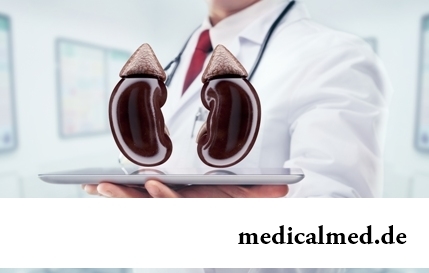
Kidneys perform the most important function of clarification of blood from those products of metabolic processes which cannot be used by an organism for obtaining energy and construction of new cells. With the urine produced by kidneys from a body of the person bulk is removed...
Section: Articles about health
For anybody not a secret that our country is one of the most "drinking" in the world. At clear understanding that the use of hard alcoholic drinks – occupation extremely harmful, most of Russians belong to alcoholism with unjustified loyalty. Apparently, existence of a set of myths in which tendency to excessive libations looks nearly positively is explained by it. It is worth getting acquainted with the most widespread of similar delusions and to be convinced in them not...
Section: Articles about health
Traveling all over the world, many try to try the most exotic dishes of national cuisines. Exists even so-called died away...
Section: Articles about health
The phenomenon of the panic attack is known long ago, but the reasons of its emergence still are up to the end not found out. It is established that more than 30% of people at least once in life become the victims of very unpleasant phenomenon: without everyones on that the reasons they have a feeling of horror, with...
Section: Articles about health
Heart disease and blood vessels lead to disturbance of blood supply of bodies and fabrics that involves failures in their work, deterioration in health of the person, decrease in its working capacity and standard of living. Annually more than 17 million inhabitants of our planet perish from pathologies such....
Section: Articles about health
Tuberculosis – a serious infectious disease which development is caused by mycobacteria (Koch's bacilli). The illness is known from a deep d...
Section: Articles about health
Physical activity is necessary for normal functioning of a human body. At a lack of the movement joints cease to function, muscles atrophy, cardiovascular activity is broken and the metabolism worsens. Modern городс...
Section: Articles about health
Ability of an organism to resist to adverse environmental factors (to impact of temperature drops, humidity and pressure, to the attacks of causative organisms, etc.) directly depends on what the person eats. Business here not only in that cells of a body received a necessary set of nutrients, vitamins and microelements. Scientists established that such components which are capable to influence negatively immune system, in connection with also are a part of foodstuff...
Section: Articles about health
What they, women? Beautiful, gentle, passionate and at the same time windy, gusty, and nervous. And what is stranger: all эт...
Section: Articles about health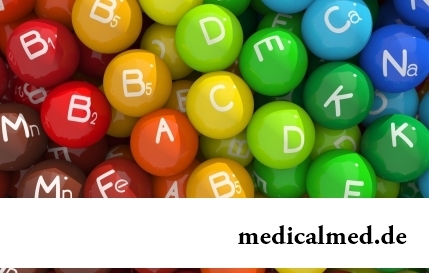
Vitamin complexes belong to the most popular drugs, probably, in our country there is no person who was not hearing about advantage of vitamins and never their accepting. The more vitamins, the better, we consider and as it appeared, cruelly we are mistaken. So l...
Section: Articles about health
Among a set of the perfumery and cosmetic goods which are released today the special group is made by the means containing antibacterial components. Such types of gels, shampoos, soaps, creams, lotions and other products are positioned by manufacturers as a panacea from all diseases caused by pathogenic microorganisms. The unlimited and uncontrolled use of similar means becomes result of trustfulness of the buyers hypnotized by persuasive advertizing sometimes. Many spetsial...
Section: Articles about health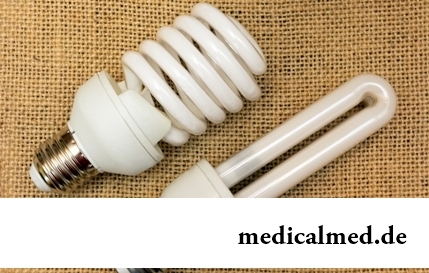
Energy saving lamps are one of the most popular products of innovative technologies, and there is no wonder: they much эк...
Section: Articles about health
What is in our understanding weeds? It plants which are considered to be suitable only for compost pits and feeding of animals. Meanwhile, among the weeds growing literally under legs it is possible to find the mass of the officinal herbs possessing invaluable Paul...
Section: Articles about health
For the person who daily since morning gathers for work it is very important to wake up vigorous and ready by day of work. Actually, each of us experiences difficulties with this, at first sight, simple business from time to time. After night rest exert impact on a condition of an organism the weather which collected for several days fatigue, household and office problems, quality of a dream and many other factors....
Section: Articles about health
Helminthosis is one of the most widespread diseases. Statistically, with any species of helminths it is infected porridges...
Section: Articles about health
Each of us repeatedly noticed that the people having the same passport age are sometimes not similar on one-years at all. One at the age of 40-45 years already looks almost an old man, and another and in 60 is young, vigorous and full of life. The matter is that state нашег...
Section: Articles about health
For most of the working people the problem of having a snack is particularly acute enough. Sooner or later there is a question: what can be eaten quickly between a breakfast and a lunch or a lunch and leaving from service so that to receive necessary power feed, but not to overload an organism with harmful components or excess calories? We bring to your attention the list of products which quite conform to these requirements....
Section: Articles about health
Each failure in work of bodies and systems of a human body is, as a rule, shown by the whole complex of symptoms. In particular, N...
Section: Articles about health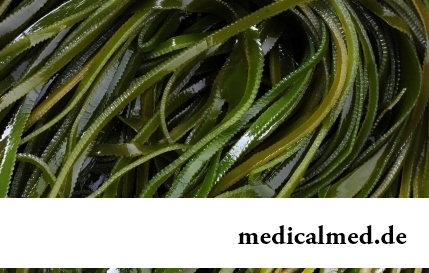
For residents of the countries of Southeast Asia various algas are an obligatory component of a daily diet. Their popularity is connected not only with high tastes, but also with numerous curative properties. Russians are a little familiar with...
Section: Articles about health
It is known that the person for 80% consists of water which participates in all processes of an organism. The person loses liquid daily – as a result of sweating, breath, an urination, and its insufficient completion due to various reasons can lead to dehydration of varying severity. Dehydration (dehydration) occurs already in case of loss of liquid in number of 1% of body weight and can result both in easy thirst, and by the death. In time to notice signs обезвож...
Section: Articles about health
Wood louse – the ordinary-looking unpretentious plant extended in all territory of our country. It quickly expands, and sometimes for...
Section: Articles about health
The fatigue, sleep debt, disturbances of food, bad mood, vagaries of the weather – all these circumstances badly affect our appearance. Especially the person suffers: skin becomes flabby, loses healthy color, becomes covered by wrinkles, zones of hypostases and t appear...
Section: Articles about health
Transfusion of donor blood has almost century history. In spite of the fact that this procedure is quite usual for many people, process of blood donation is still surrounded with numerous myths. Today we aimed to discredit the most widespread of them....
Section: Articles about health
